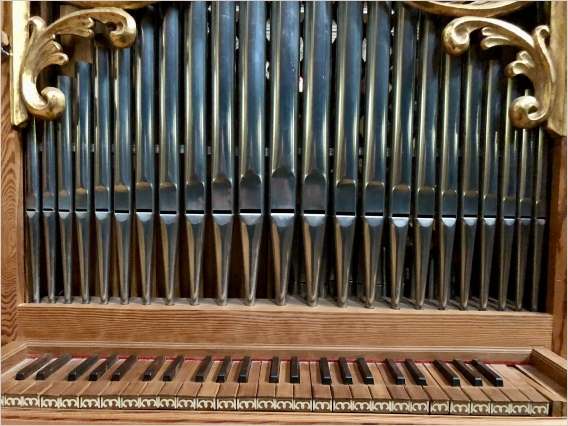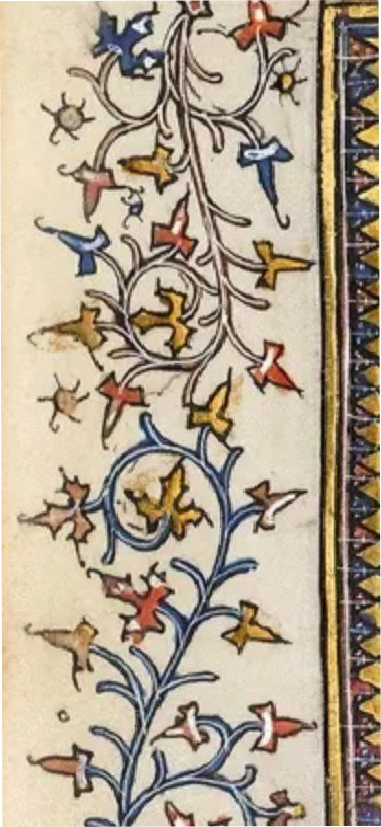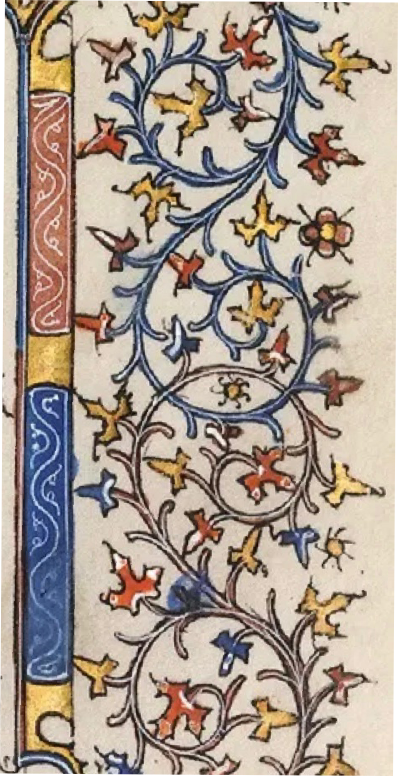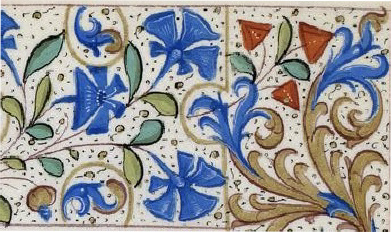Another Timbre TimHarrisonbre

Interview with Katelyn Clark & Isaiah Ceccarelli
You two have collaborated for a number of years (including on two tracks from Isaiah’s earlier Another Timbre CD ‘Bow’). How has your collaboration endured?
Yes, we've been playing together for over a decade now. Our collaboration has lasted for many reasons — we share a common sense of musical taste and aesthetic, we communicate easily when we play together, and we're good friends and get along very well. We also both grew up on the North American west coast (California and British Columbia) with formative years in the 1990s, so we share a lot of cultural references, which gives us a huge amount of material to build on.
How did you first meet and start working together?
We initially met just being in/around the Montréal music scene. We first played together with a couple of other people in a casual session of improvising, and then met up a few months later to try out some early repertoire for voice and organ. We ended up improvising with portative organ and percussion and started working together from there.
Do you literally compose the pieces together, as a fully collaborative thing, or does one or other of you take charge of each piece as it develops? And what part does improvisation play in the process?
Yes, we create work together as a fully collaborative process, and improvisation is at the base of this process. But we're not really starting from zero for any project at this point. Since we've been working together since 2011, we already have a shared language and an idea of what we can make. We also know our instruments' capacities and create with that in mind. The music on our album grew out of an initial improvisation session that we recorded. Listening back to the recording, we identified a group of ideas that we liked, and then built out and developed the ideas over several sessions working in person. By the end of the process, we had a collection of pieces that we can recreate by ear or with a basic sketch; we don't work from a written score.
The instrumentation, as well as the titles of some of the pieces, suggest that your music is engaging with early music in various ways. Could you say more about this, and why has your music taken this direction?
This is a difficult question to answer. We use copies of portative organs with historical temperaments, since that’s what I (Katelyn) use as a historical keyboardist and as an early music specialist, but we aren’t directly engaging with early repertoire or historical performance practice. Early music itself is a contemporary movement, so it’s really part of many things and expressed in different ways. Beyond my being a historical keyboardist, Isaiah is also an amateur performer of some early vocal music and a fan of several early-music ensembles, as well as being a more general lover of (musical) history. These aspects influence his musical practice as a composer and performer.
But in general there does seem to be a growing degree of cross-fertilisation between the early music movement and experimental contemporary music. Three of the five discs in this batch of Another Timbre releases exhibit this tendency in different ways, as do your musical histories. Have you any ideas as to why this is happening?
Isaiah: It’s always fascinating to see how people come to different types of music. Speaking for myself, being raised on my parents’ classic rock ‘n’ roll, and then jazz as an aspiring drum set player, my discovery of ‘early music’ (and, at the same time, of contemporary ‘holy minimalism’ and other early music-inspired forms) coincided with a need for something different. I had simply never heard music like that before. In so many ways, and completely removed from musicological and interpretative discussions, I just fell in love with how the music sounded. As Kate says below, there’s an element of the unknown, of improvisation, in early music that is attractive to contemporary performers and composers. Personally, when I began singing in a choir that performed plainchant from different traditions and early polyphony, no-one cared if I had studied that music at university (it was very much like being a jazz musician in that respect!) It only mattered if I could do it and if I wanted to do it. I don’t think one would receive the same welcome if one decided to just start performing classical music.... There’s so much baggage! I think that’s why the idea of early music has such a power of attraction for people who might not feel at home in more formal classical music settings (including contemporary composers and performers!)
Katelyn: I’ve been noticing this trend as well, and how early music materials appear more and more outside of historical performance practice. It’s hard to comment on the general cross-fertilisationof the early music movement and experimental contemporary music since both are contemporary practices and have specific expectations. That said, I think that historically-inspired performance now includes a growing body of experimental contemporary work based on early repertoire. The rich (and massive) body of early musical material that’s open for new inspiration and re-imagination is a great point of departure for experimentation. We don’t know exactly how Machaut’s Messe ounded in the 14th century or Bingen’s Symphonia in the 12th century or even Bach’s Goldberg Variations in the 18th century. All these works need compelling interpretation, variation and improvisation to come to life. The possibilities are limitless. I suspect an attraction to this limitlessness is why artists, like those represented on this batch of Another Timbre discs, are interacting with early music in different ways.
A lot of the music on the disc seems to have a kind of massive quality – like a solid land mass – and some of the track titles seem to reference this. Is this something you feel, or aim for, or am I making it up?
Yes, we’re certainly aiming for a large and expansive quality in this music and it’s great to know that this quality came across to you. Several track titles do refer to land formations and echo the massive features within the music. In the longer duration pieces especially, we want to produce an overwhelming experience for the listener and aim for a cinematic-landscape quality. We hold sounds and tensions for extended amounts of time and push ourselves to the physical limits of what we can maintain while playing. Bells is especially physically demanding to play, since it’s relentless and uses extremely large percussion (40” bass drum, bell plates, almglocken) and huge clusters on the organ. On a more poetic note, the titles in some cases reflect the areas we come from on the West Coast, either because of pandemic-induced desire for travel(!), or simply because geological and other natural features play such an important role in the areas in which we grew up.
Yes, there’s an unusual kind of virtuosity, which has nothing to do with speed or flying fingers. You’re both extremely proficient instrumentalists, but choose not to show that off in the music you play together. John Tilbury has spoken about having to resist & unlearn many of the assumptions underlying the way he was taught several decades ago. Is it the same for you, or has musical training improved in this respect in the intervening years?
Isaiah: Yes, I think musical training has definitely changed or improved in the intervening years. I have never felt any external pressure to play a certain way or to perform only certain kinds of music. This surely has a lot to do with my sidestepping classical music as a teenager, when I adopted the drumset over orchestral percussion, and by continuing in jazz education at university level. The music that Kate and I make together is a personal kind of virtuosic performance wherein we push ourselves physically and mentally to extremes that might not even be fully obvious to someone listening to the recording. We’re actually meeting in a place that’s not the music we grew up with or learned as students.
Katelyn: It’s funny you ask this question, since I think we’re showing off our technical proficieny in many of these works! But I know what you mean, we definitely focus on creating longer duration works that evolve slowly and don’t use fast passagework. In my training as a harpsichordist, particularly while at the conservatory in Amsterdam, I felt an extreme pressure for each movement and gesture to be absolutely perfect. Everything needed to be smooth, effortless and deliberate. Fast and complicated passages needed to sound as easy as possible, but I felt there was more emphasis on pacing, musical improvisation, and taste than on speed. The speed of passages became non-issues throughout my training, and dexterity integrated everywhere. I don’t resist any of this training in the music I make with Isaiah or in other contexts, I lean into it and welcome it. I try to expand my movements as much as possible, time my gestures as well I can, and fit in movements that interact thoughtfully.
at192 Katelyn Clark & Isaiah Ceccarelli ‘Landmarks’
Eight collaboratively composed pieces by Katelyn Clark and Isaiah Ceccarelli
1 ‘Bells’ 10:25 Youtube extract
2 ‘Landmarks’ 3:09
3 ‘Landforms’ 10:15
4 ‘Improvisation on Kyrie Eleison’ 3:31
5 ‘Improvisation on a quarter’ 3:10
6 ‘Five Distances’ 20:07
7 ‘Gate’ 1:05
8 ‘Chaparral’ 1:58
Katelyn Clark continuo organ & portative organ
Isaiah Ceccarelli bass drum, bell plates, almglocken, continuoorgan, analogue synth
Recorded by Gabriel Dubuc in Montreal, December 2021




